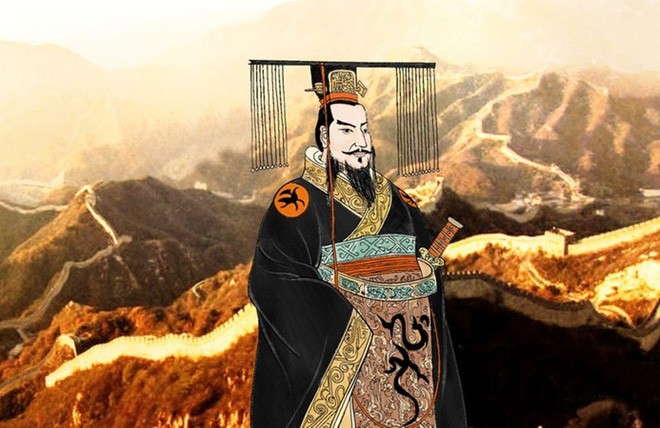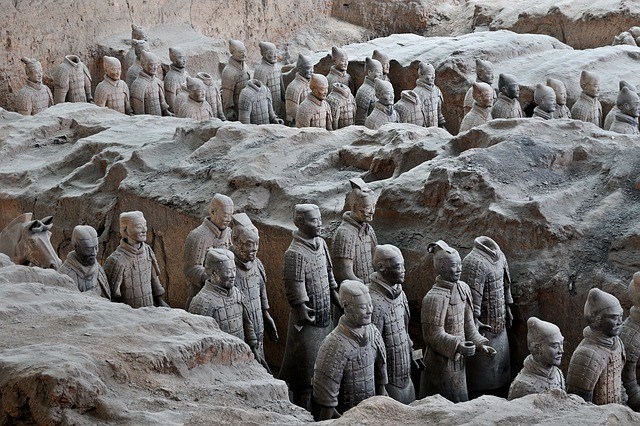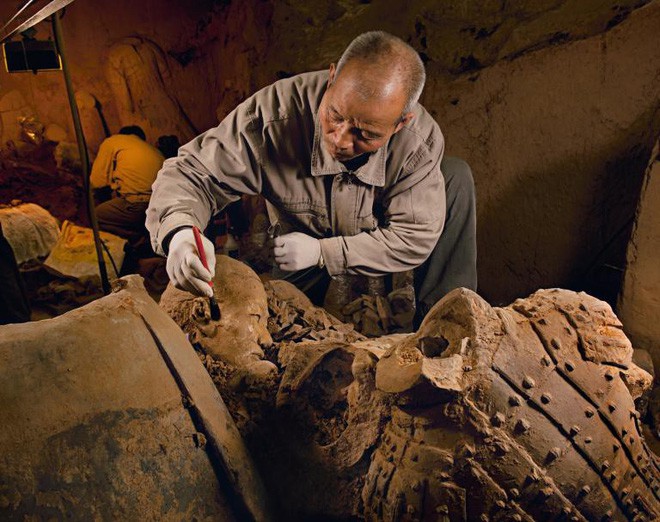The vibrant colors on the terracotta statues make visitors to the Terracotta Warriors Museum in Xi'an seem to imagine the great ambition of Qin Shi Huang, an emperor who wished to transcend the hell on earth.

As the first emperor in history to unify China and rule over a vast country, Qin Shi Huang contributed greatly during his mighty reign.
During the period from unifying the country in 221 BC to his death in 210 BC, Qin Shi Huang left many strong marks in Chinese history, from building the Great Wall to unifying units of measurement, currency, writing...

China's first emperor also prepared his resting place early in his reign, by commanding the construction of a mausoleum complex covering more than 90 square kilometers as an "underground kingdom".

The arm of a terracotta soldier statue gives scientists a clue as to how bold colors were used to decorate the armor of Emperor Qin Shi Huang's afterlife army more than 2,200 years ago.

Through more than 40 years of excavation, experts have found more than 8,000 unique terracotta soldier statues and many valuable artifacts.

Not just ordinary terracotta statues, the mighty army and war horses in the tomb of Qin Shi Huang look amazingly lifelike thanks to the excellent color art of ancient artisans such as red, blue, purple and yellow.

As excavations get closer to the central mound of the mausoleum, archaeologists hope to reveal more "unusual" signs about the terracotta army.

Unfortunately, most of these special colors did not survive as the ravages of time and exposure to air during excavation caused them to peel and crack.

In previous excavations, archaeologists were often only able to look at the beautiful glossy colors of the warrior statues, before the fragile shell was destroyed by the hot, dry air of Xi'an.

A study shows that if you expose terracotta statues to air, the paint with impressive colors will start to shrink after 15 seconds and peel off, crumbling in just 4 minutes. The traces of thousands of years old artifacts are destroyed in a short time, only equivalent to the time it takes to boil an egg.
How to get there?
Xi'an is a large city served by buses, trains and an international airport. The mausoleum and museum can be reached by bus, minibus, taxi or a variety of guided tours.
When should I come?
The Mausoleum of Emperor Qin Shi Huang can be visited in any season. Summer, although crowded, is hot and humid, and winter is quite cold. Spring and autumn temperatures are relatively pleasant.
How to visit
Guided tours are available on site. Renting a headset for a recorded audio tour is a less expensive and more flexible option.


































